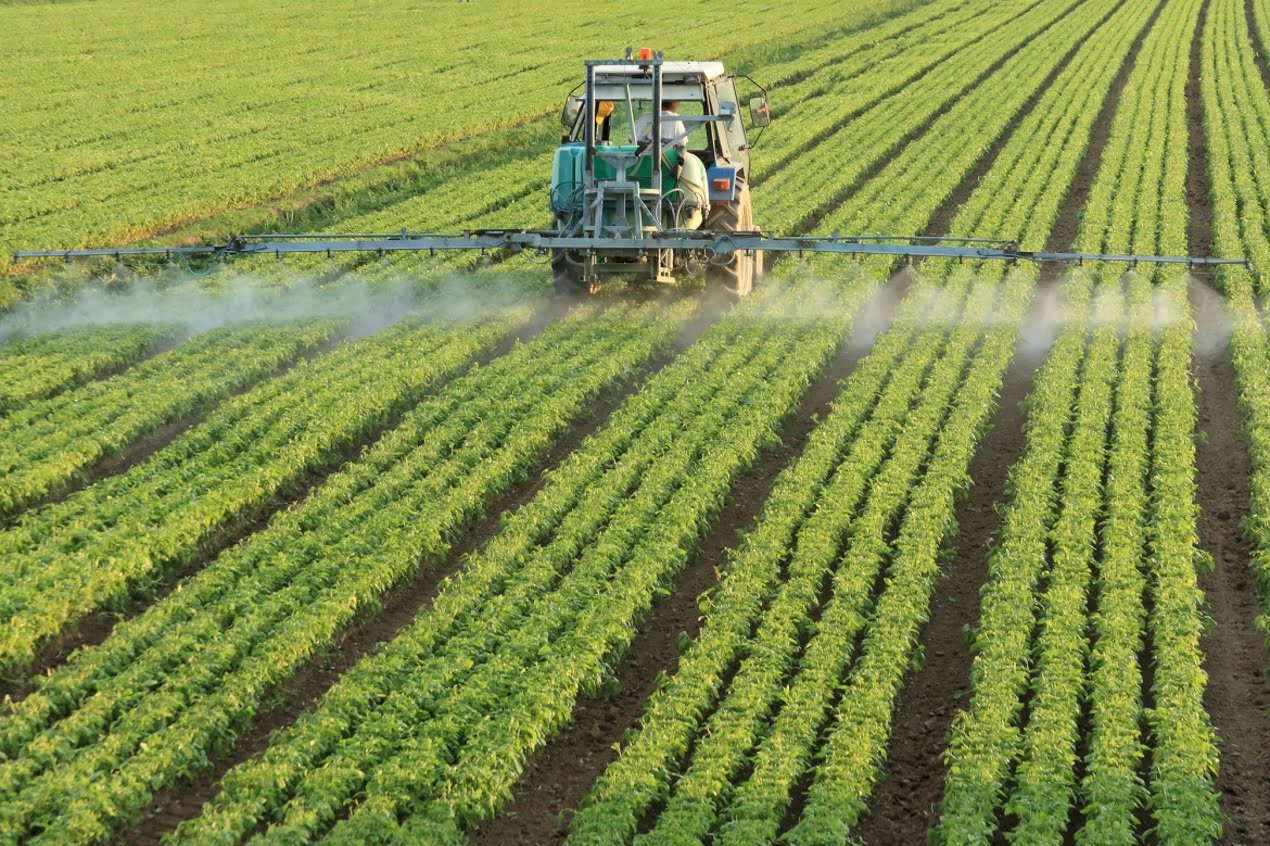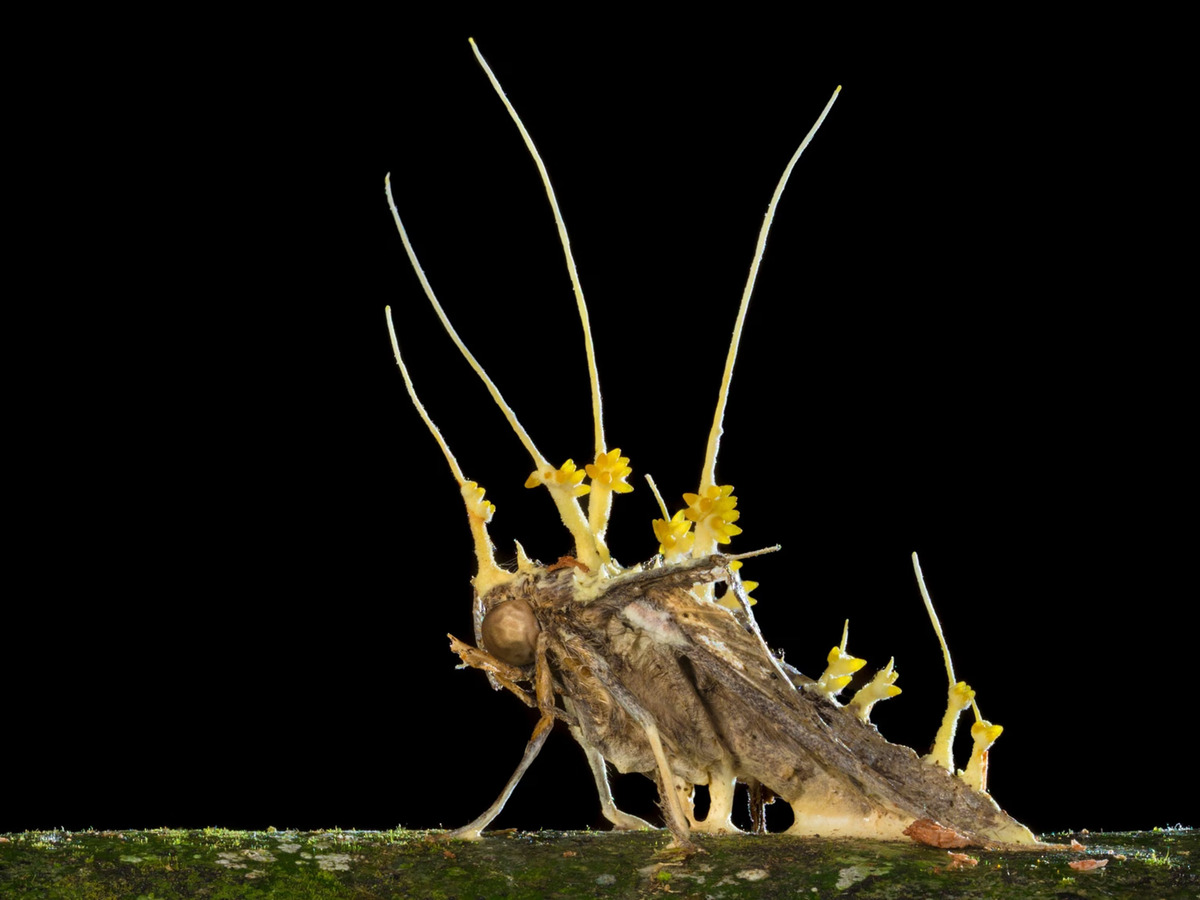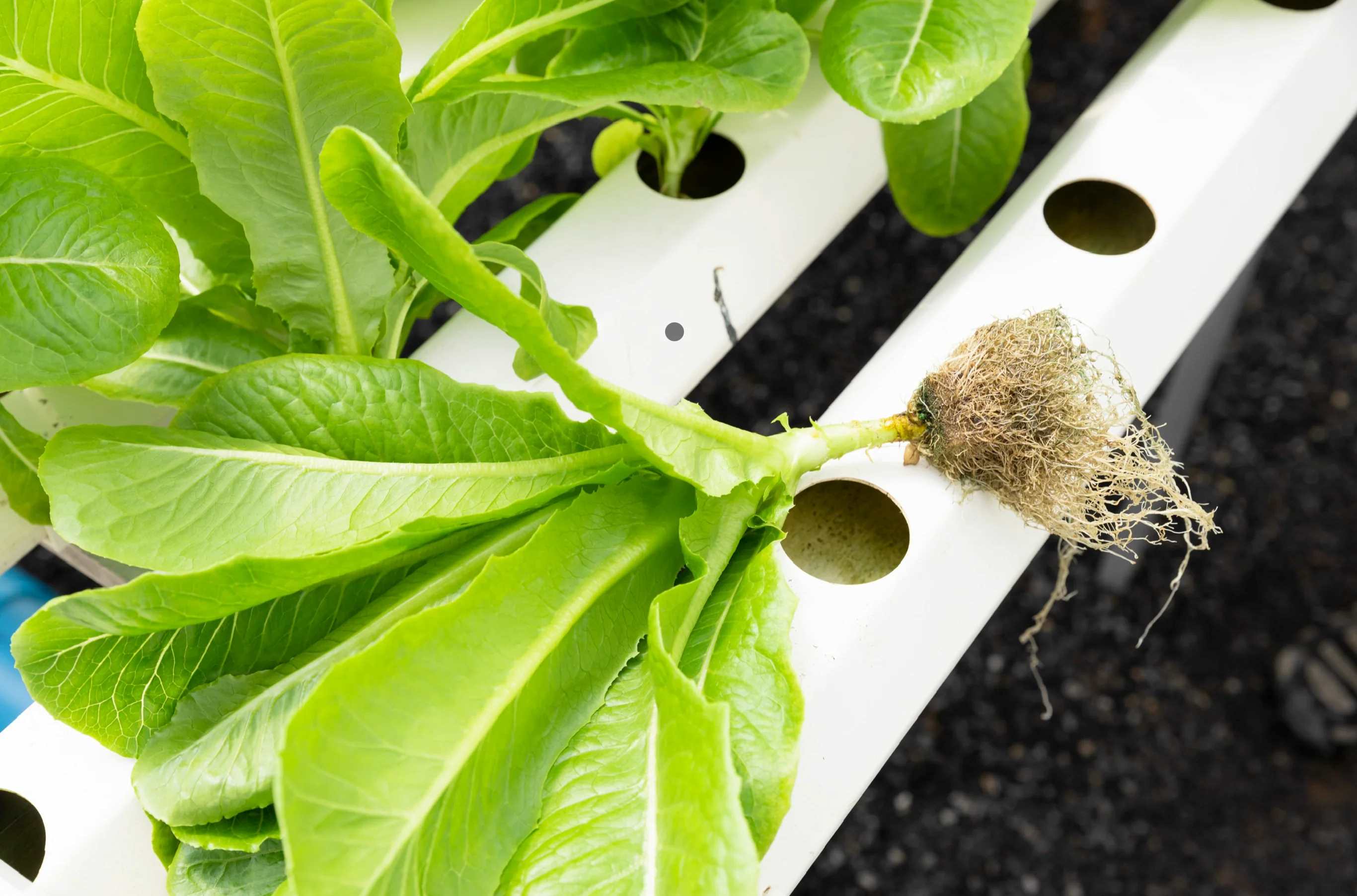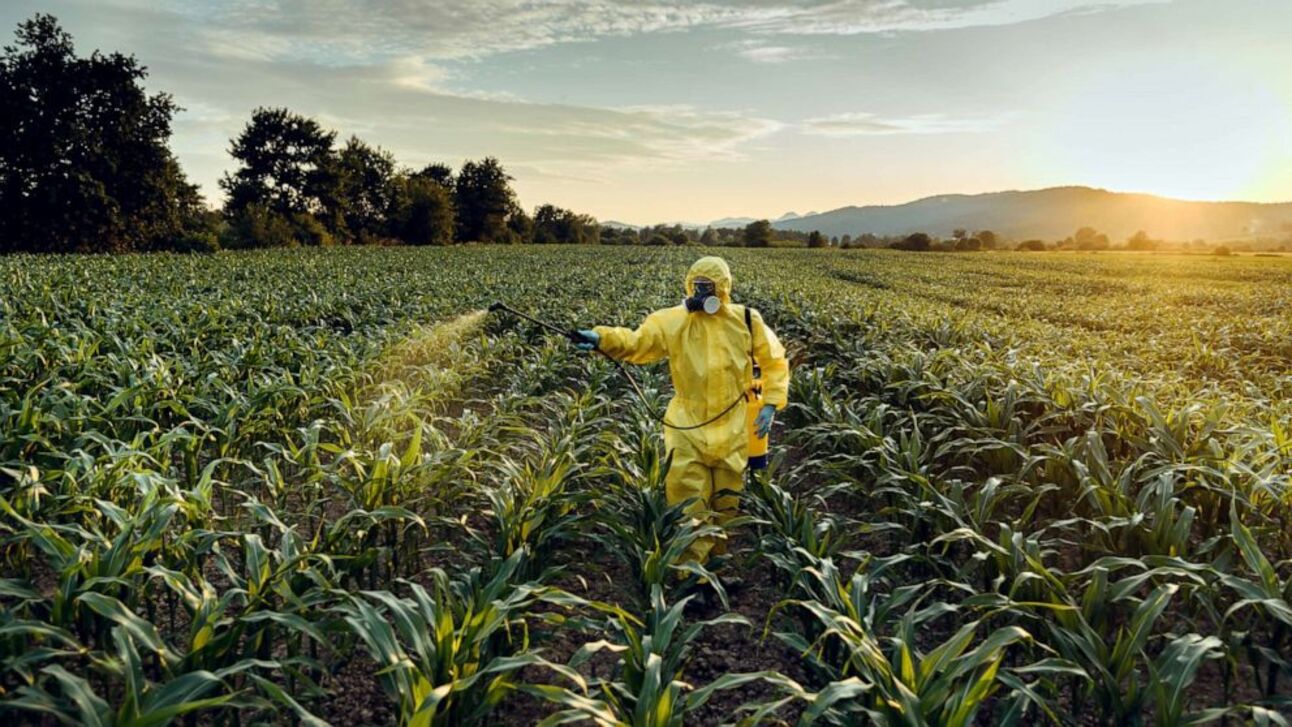Home>Gardening News and Trends>Latest News>What Does Inserting Pesticides At The Genetic Level Do


Latest News
What Does Inserting Pesticides At The Genetic Level Do
Modified: January 22, 2024
Discover the Latest News on the Controversial Practice of Inserting Pesticides at the Genetic Level and Its Potential Implications. Stay informed with our expert analysis and insights.
(Many of the links in this article redirect to a specific reviewed product. Your purchase of these products through affiliate links helps to generate commission for Chicagolandgardening.com, at no extra cost. Learn more)
Table of Contents
- Introduction
- The Basics of Genetic Level Pesticide Insertion
- Benefits of Inserting Pesticides at the Genetic Level
- Concerns and Criticisms of Genetic Level Pesticide Insertion
- Environmental Impacts of Genetic Level Pesticide Insertion
- Human Health Implications of Genetic Level Pesticide Insertion
- Case Studies: Examples of Genetic Level Pesticide Insertion
- Regulations and Policies Surrounding Genetic Level Pesticide Insertion
- Future Perspectives and Research Directions
- Conclusion
Introduction
Welcome to the world of genetic level pesticide insertion – a topic that is both fascinating and controversial. In recent years, scientists and researchers have developed innovative techniques to insert pesticides at the genetic level of plants. This cutting-edge approach has the potential to revolutionize agriculture and address challenges such as crop diseases and pests.
Genetic level pesticide insertion involves the introduction of specific genes into the DNA of plants, allowing them to produce natural pesticides within their tissues. This approach offers several advantages over traditional pesticide application methods, including increased crop protection, reduced chemical use, and improved overall plant health.
However, the concept of manipulating genes for pesticide production has raised concerns among environmentalists, consumer advocates, and certain segments of the public. They worry about potential risks to human health and the environment, as well as the implications for biodiversity and sustainability.
In this article, we will delve into the basics of genetic level pesticide insertion, exploring its benefits, concerns, and potential implications. We will also examine real-world case studies and discuss the existing regulations and policies surrounding this technology. Finally, we will explore future perspectives and research directions in this exciting field.
It is essential to approach this topic with an open mind, considering both the potential advantages and challenges associated with genetic level pesticide insertion. By doing so, we can better understand the implications and make informed decisions about the future of agriculture and food production.
The Basics of Genetic Level Pesticide Insertion
To fully grasp the concept of genetic level pesticide insertion, it is important to understand the underlying process and techniques involved. At its core, this approach revolves around the manipulation of genes to enable plants to produce natural pesticides.
The process typically begins with the identification of specific genes responsible for producing natural insecticides or resistance to pests in other organisms. These genes may be sourced from bacteria, fungi, or even other plants. Once identified, scientists extract these genes and introduce them into the target plant’s DNA through various methods.
One common technique used is known as genetic transformation. In this process, the genes of interest are inserted into the plant’s genome using a carrier, such as a modified virus or a tiny metal particle. Another method involves the use of specialized techniques like CRISPR-Cas9, which allows scientists to edit the plant’s genes directly.
Once the genes have been successfully inserted, they become integrated into the plant’s DNA and are passed down to successive generations. This enables the plant to produce the desired pesticides continuously, providing a built-in defense against pests and diseases.
It is important to note that the genes used in genetic level pesticide insertion are carefully selected to ensure they only produce natural pesticides. These pesticides are often derived from compounds that naturally occur in other organisms, such as bacteria or plants. By using naturally occurring molecules, the risk of creating harmful or toxic substances is minimized.
This approach offers several advantages over traditional pesticide application methods. Firstly, it provides a targeted and specific defense mechanism against pests, minimizing the need for broad-spectrum chemical pesticides. This approach reduces the impact on beneficial insects, such as pollinators, and helps preserve ecological balance.
Secondly, genetic level pesticide insertion can potentially reduce the overall use of chemical pesticides. By equipping plants with their own pesticide-producing genes, farmers can significantly reduce or eliminate the need for external pesticide applications. This can lead to a reduction in chemical residues in crops and potential benefits for consumer health.
Lastly, genetic level pesticide insertion has the potential to enhance plant health and resilience. By equipping plants with their own defense mechanisms, they can better withstand attacks from pests and diseases. This can result in higher crop yields, improved quality, and reduced economic losses for farmers.
In the following sections, we will explore the benefits, concerns, and real-world examples related to genetic level pesticide insertion. By examining these aspects, we can gain a comprehensive understanding of this technology’s potential impact and its implications for agriculture and the environment.
Benefits of Inserting Pesticides at the Genetic Level
The process of inserting pesticides at the genetic level offers numerous benefits that have the potential to transform agricultural practices. Let us explore some of the key advantages.
1. Enhanced Crop Protection: By equipping plants with their own pesticide-producing genes, genetic level pesticide insertion provides a continuous defense mechanism against pests and diseases. This targeted approach ensures that plants are protected throughout their growth cycle, reducing crop losses and improving overall yields.
2. Reduced Chemical Usage: Traditional pesticide application methods often require the frequent and widespread use of chemical sprays. In contrast, genetic level pesticide insertion minimizes the reliance on external pesticides, leading to a reduction in chemical usage. This not only benefits the environment but also decreases the potential risk of chemical residues in crops.
3. Preservation of Beneficial Organisms: Conventional pesticides can harm beneficial insects, such as bees and butterflies, which play a crucial role in pollination. Genetic level pesticide insertion offers a targeted approach that focuses on specific pests, minimizing the impact on beneficial organisms and helping to maintain ecological balance and biodiversity.
4. Increased Sustainability: By reducing the dependence on chemical pesticides, genetic level pesticide insertion contributes to a more sustainable agricultural system. It promotes the adoption of integrated pest management strategies, which prioritize the use of non-chemical control methods alongside genetic resistance. This approach helps conserve resources, protects the environment, and ensures long-term food security.
5. Potential Reduction in Crop Losses: Pests and diseases can cause significant economic losses for farmers. With genetic level pesticide insertion, crops have an inherent ability to combat these threats, potentially reducing the extent of crop losses. This not only benefits farmers financially but also contributes to a more stable food supply chain.
6. Improved Food Quality: Genetic level pesticide insertion can lead to improved food quality by reducing the use of chemical pesticides. This results in crops with fewer chemical residues, potentially enhancing the nutritional value and safety of the food we consume.
While these benefits are promising, it is important to consider the potential concerns and limitations associated with genetic level pesticide insertion. In the next section, we will address some of the criticisms and risks of this technology, providing a balanced perspective on the subject.
Concerns and Criticisms of Genetic Level Pesticide Insertion
Despite the potential benefits, genetic level pesticide insertion has also faced criticism and raised concerns among various stakeholders. It is important to address these concerns to have a comprehensive understanding of this technology. Let’s explore some of the key criticisms:
1. Environmental Impact: One of the primary concerns surrounding genetic level pesticide insertion is its potential impact on the environment. Critics argue that introducing genetically modified organisms (GMOs) into natural ecosystems may have unintended consequences. They raise concerns about the potential for gene flow to wild relatives, impacting biodiversity and causing ecological disturbances.
2. Unknown Long-Term Effects: Since genetic level pesticide insertion is a relatively new technology, there is limited data available on its long-term effects. Critics argue that unpredictable interactions between genetically modified crops and the environment may lead to unintended consequences, such as the evolution of pesticide-resistant pests or the disruption of natural food chains.
3. Lack of Transparency and Consumer Acceptance: Some critics argue that there is a lack of transparency and adequate labeling of genetically modified crops, which hinders consumer choice. There are concerns regarding the potential impact on consumer health and the right to know what is in the food they consume. These concerns have triggered debates about adequate regulations, labeling requirements, and consumer education.
4. Potential Health Risks: Critics have expressed concerns about potential health risks associated with genetic level pesticide insertion. While genetically modified crops undergo rigorous safety assessments, concerns persist regarding the potential allergenicity or toxicity of the produced pesticides. However, extensive scientific studies have shown no definitive evidence of harm to human health associated with genetically modified crops.
5. Economic Impact on Small-Scale Farmers: Critics argue that the adoption of genetic level pesticide insertion might favor large-scale agricultural enterprises over small-scale farmers. The cost of genetically modified seeds, licensing agreements, and intellectual property rights could pose financial burdens on small-scale farmers. This raises concerns about a potential increase in inequality and the loss of agricultural diversity.
6. Regulatory Challenges: The regulation of genetic level pesticide insertion poses a significant challenge. Different countries have varying approaches, creating complex barriers to the global adoption and trade of genetically modified crops. Harmonizing regulations while ensuring safety and consumer confidence remains a complex task.
It is important to address these concerns and engage in thoughtful discussions to ensure the responsible and sustainable development and use of genetic level pesticide insertion. In the following sections, we will explore the environmental impacts, human health implications, and real-world case studies to provide a holistic perspective on this technology.
Environmental Impacts of Genetic Level Pesticide Insertion
The environmental impacts of genetic level pesticide insertion have been a subject of scrutiny and debate. While this technology offers potential benefits, it is crucial to consider its potential effects on the environment. Let’s explore some of the key environmental impacts associated with genetic level pesticide insertion:
1. Gene Flow and Biodiversity: One concern is the potential for gene flow from genetically modified crops to wild relatives. Pollen from genetically modified crops can potentially cross-pollinate with related plants in the wild, leading to the spread of modified genes. This poses a risk to biodiversity, as it may disrupt the natural genetic makeup of wild species and impact ecosystems.
2. Ecological Imbalance: Modifying plants at the genetic level to produce their own pesticides may alter natural food webs and ecological relationships. By targeting specific pests, genetic level pesticide insertion can disrupt the natural balance between predators and prey. This alteration may have cascading effects on other organisms within the ecosystem, potentially leading to unintended consequences.
3. Pesticide Resistance: The continuous production of pesticides by genetically modified crops may drive the development of pesticide resistance in target pests. Prolonged exposure to the same toxins over generations may result in the evolution of resistance mechanisms in pest populations. This can render the inserted pesticides less effective, leading to increased pesticide use or the need for alternative pest control strategies.
4. Non-Target Organism Effects: While genetic level pesticide insertion aims to target specific pests, there is a possibility of unintended effects on non-target organisms. These include beneficial insects, birds, and other organisms that play important roles in ecosystems. It is crucial to assess the potential impact on non-target organisms to ensure the preservation of ecological balance.
5. Soil and Water Contamination: The use of traditional chemical pesticides can lead to soil and water contamination, but genetic level pesticide insertion offers the potential to reduce chemical use. However, the release of modified plants into the environment may still pose a risk of pesticide residues entering soil and water systems. Consideration must be given to minimize any potential negative impact on soil health and water quality.
6. Impact on Pollinators: Pollinators such as bees and butterflies are vital for the fertilization and reproduction of many plants. Critics argue that genetic level pesticide insertion, although more targeted, may still have unintended consequences for pollinators. It is important to evaluate the potential impacts on pollinators and develop strategies to ensure their protection and conservation.
Addressing these environmental concerns requires comprehensive risk assessments, monitoring, and the implementation of adequate management strategies. By considering potential impacts and implementing responsible practices, we can mitigate risks and ensure the sustainable integration of genetic level pesticide insertion into agricultural systems.
Human Health Implications of Genetic Level Pesticide Insertion
When it comes to genetic level pesticide insertion, understanding the potential human health implications is of utmost importance. While genetically modified crops undergo rigorous safety assessments, concerns and debates regarding the impact on human health have emerged. Let’s explore some key considerations:
1. Allergenicity and Toxicity: Critics raise concerns about the potential allergenicity or toxicity of the pesticides produced by genetically modified crops. However, extensive scientific studies have shown no definitive evidence of harm to human health associated with genetically modified crops. Regulatory authorities, such as the US Food and Drug Administration (FDA), evaluate the safety of genetically modified crops before they are approved for commercialization.
2. Potential Reduction in Chemical Residues: By equipping plants with their own pesticide-producing genes, genetic level pesticide insertion has the potential to reduce the need for external pesticide applications. This could result in fewer chemical residues on crops, leading to potential benefits for consumer health. However, thorough testing and monitoring are essential to ensure that the introduced pesticides are safe for human consumption.
3. Nutritional Composition: Critics have raised concerns about potential changes in the nutritional composition of genetically modified crops. However, scientific studies have consistently shown that genetic modification itself does not significantly alter the nutritional value of crops. The focus of genetic level pesticide insertion is primarily on enhancing pest resistance rather than nutritional modifications.
4. Antibiotic Resistance Marker Genes: In the past, antibiotic resistance marker genes were used during the genetic modification process to identify and select transformed plants. Although these marker genes are no longer commonly used in commercial genetically modified crops, concerns have been raised about potential horizontal gene transfer and the development of antibiotic resistance in human pathogens. The use of alternative marker genes or marker-free transformation techniques has reduced this risk.
5. Labeling and Consumer Choice: Transparency and consumer choice are important considerations when it comes to genetically modified crops. Critics argue that proper labeling is necessary to allow consumers to make informed decisions about the food they consume. Regulations and industry initiatives have been developed in various countries to address this concern, allowing consumers to identify and choose genetically modified products.
It is crucial to continue monitoring and evaluating the long-term effects of genetic level pesticide insertion on human health. Rigorous safety assessments, appropriate labeling, and clear communication with consumers are essential to ensure public trust and confidence in this technology.
By balancing the potential benefits and risks, conducting thorough risk assessments, and implementing proper regulations, we can embrace the potential of genetic level pesticide insertion while prioritizing human health and safety.
Case Studies: Examples of Genetic Level Pesticide Insertion
As genetic level pesticide insertion continues to evolve, there have been several noteworthy case studies that illustrate its application and impact. These examples highlight the potential benefits and challenges associated with this technology. Let’s explore a few notable case studies:
1. Bt Cotton: Bt cotton, genetically modified to produce the Bacillus thuringiensis (Bt) toxin, is one of the most successful examples of genetic level pesticide insertion. The Bt toxin is toxic to bollworms, a major cotton pest. By integrating the Bt gene into cotton plants, the need for chemical insecticides is greatly reduced. Bt cotton has been widely adopted in countries like India and the United States, resulting in increased yield, reduced pesticide usage, and improved economic outcomes for farmers.
2. Rainbow Papaya: The Rainbow Papaya, developed in the 1990s, was genetically modified to resist the Papaya Ringspot Virus (PRSV). The insertion of a PRSV-resistant gene into papaya allowed for widespread cultivation in areas affected by the virus, saving the papaya industry from significant losses. The Rainbow Papaya has been commercially successful in Hawaii, demonstrating how genetic level pesticide insertion can help control devastating plant diseases.
3. Innate Potato: The Innate Potato is genetically modified to resist bruising and browning, reducing waste and increasing shelf life. This genetically modified potato was developed using genetic level pesticide insertion techniques to suppress genes responsible for enzymatic browning and bruise damage. By reducing the need for chemical treatments and extending shelf life, the Innate Potato offers potential benefits in the food industry and reduces food waste.
4. Insect-Resistant Maize: Insect-Resistant Maize, or Bt maize, has been genetically modified to produce the Bt toxin, protecting maize crops against pests such as the European corn borer and corn rootworm. The incorporation of the Bt gene provides continuous protection throughout the growing season, reducing the need for synthetic insecticides and minimizing yield losses. Bt maize has been adopted globally, contributing to higher yields and improved pest management.
These case studies are indicative of the potential benefits of genetic level pesticide insertion in agriculture. However, it is crucial to consider the context in which these technologies are employed, including environmental factors, farming practices, and local regulations.
By analyzing these case studies and their outcomes, we can gain insights into the real-world application of genetic level pesticide insertion and its impact on crop productivity, pest management, and farmer livelihoods. As this technology continues to advance, further research and case studies will contribute to a more comprehensive understanding of its potential and limitations.
Regulations and Policies Surrounding Genetic Level Pesticide Insertion
Genetic level pesticide insertion is subject to a variety of regulations and policies to ensure the safe and responsible development and use of genetically modified crops. These regulations and policies aim to address the potential risks and provide guidelines for the assessment, approval, and management of genetically modified organisms (GMOs). Let’s delve into some of the key aspects of the regulatory landscape:
1. Assessment and Safety Evaluation: Regulatory authorities, such as the U.S. Food and Drug Administration (FDA) and the European Food Safety Authority (EFSA), require thorough safety assessments and evaluations before genetically modified crops can be approved for commercialization. These assessments include comprehensive studies on the potential impacts on human health, environmental safety, and allergenicity. The safety evaluations undergo rigorous scrutiny, and the results guide the decision-making process.
2. Labeling and Traceability: Many countries have implemented labeling requirements for genetically modified crops to provide consumers with the choice to identify and differentiate GMO products. Labeling regulations vary across regions, with some requiring mandatory labeling for all genetically modified products, while others have threshold-based labeling requirements. The aim is to empower consumers to make informed choices based on their preferences and beliefs.
3. Coexistence and Contamination Prevention: Coexistence regulations aim to prevent unintended mixing of genetically modified crops with conventional or organic crops. These regulations establish measures to minimize gene flow and contamination risks, such as buffer zones, isolation distances, and strict management practices. The objective is to allow different agricultural systems to coexist while maintaining the integrity and purity of different crop production methods.
4. Intellectual Property Protection: The protection of intellectual property rights is an important aspect of the regulatory framework surrounding genetic level pesticide insertion. Developers of genetically modified crops often apply for patents to protect their innovations. Intellectual property protection ensures that developers can recoup their investments, encourages further research and development, and incentivizes the adoption of new technologies.
5. International Trade and Harmonization: The global trade of genetically modified crops necessitates harmonization of regulations and policies to facilitate commerce and ensure fair practices. International organizations, such as the Codex Alimentarius Commission and the World Trade Organization (WTO), work towards establishing common guidelines and principles for the safe trade and handling of GMOs. These efforts help prevent trade barriers and foster international cooperation.
The regulatory landscape surrounding genetic level pesticide insertion continues to evolve, as scientific advancements and societal concerns shape the discussions. It is important for regulatory bodies to keep pace with scientific developments, engage in stakeholder consultations, and adapt regulations based on emerging evidence, while prioritizing the protection of human health and the environment.
Clear and transparent regulations, grounded in scientific evidence, provide a framework for the responsible deployment of genetic level pesticide insertion. This allows for the safe integration of this technology into agricultural practices while ensuring that potential risks are adequately managed and monitored.
Future Perspectives and Research Directions
The field of genetic level pesticide insertion holds immense promise for the future of agriculture. As technology advances and our understanding deepens, there are several key areas that researchers are focusing on to further enhance the potential of this approach. Let’s explore some of the future perspectives and research directions in this field:
1. Development of Target-Specific Pesticides: Researchers are working on developing genetically modified crops that produce target-specific pesticides, tailored to specific pests or diseases. By refining the genetic modification process and understanding the mechanisms behind pest resistance, scientists aim to improve the efficiency and specificity of the pesticide production, reducing any potential impact on non-target organisms and maximizing crop protection.
2. Integration of Multiple Traits: Beyond pest resistance, researchers are exploring the simultaneous incorporation of multiple traits into genetically modified crops. This includes characteristics such as increased drought tolerance, enhanced nutrient uptake, or increased resistance to multiple pests and diseases. By combining multiple traits, researchers aim to create crops with comprehensive and multi-faceted defense mechanisms, providing sustainable and resilient agricultural systems.
3. Advances in Gene Editing Techniques: Gene editing techniques, such as CRISPR-Cas9, are revolutionizing the field of genetic modification. These techniques offer precise and targeted modifications to the plant genome, allowing for more efficient genetic level pesticide insertion. Ongoing research focuses on further improving the efficiency and accuracy of gene editing techniques, reducing off-target effects, and ensuring the long-term stability of edited genes in the plant genome.
4. Understanding Ecological Interactions: As genetic level pesticide insertion intersects with ecological systems, researchers are studying the broader ecological impacts of genetically modified crops. This includes assessing the effects on non-target organisms, understanding potential disruptions to food webs, and evaluating the long-term consequences on biodiversity and ecosystem services. By gaining a more comprehensive understanding of these ecological interactions, researchers can optimize genetically modified crops to minimize unintended consequences.
5. Assessing Socioeconomic Impacts: While genetic level pesticide insertion offers potential benefits, it is crucial to consider the socioeconomic impacts on farmers and consumers. Research is focusing on evaluating the economic viability and social implications of genetic modified crops, particularly for small-scale farmers. This includes studying issues related to access, affordability, intellectual property rights, and potential inequities in agricultural systems.
6. Public Engagement and Communication: Engaging the public and fostering open communication about genetic level pesticide insertion is vital for its acceptance and responsible implementation. Researchers are actively working on improving public understanding, addressing concerns, and incorporating societal values and perspectives into the decision-making process. Effective communication strategies and public engagement initiatives can ensure that the benefits, risks, and ethical considerations of genetic level pesticide insertion are properly understood by all stakeholders.
By investing in research and addressing these future perspectives, we can harness the potential benefits of genetic level pesticide insertion while addressing concerns and mitigating risks. Continued collaboration between scientists, policymakers, farmers, and consumers is essential to shape the future of this technology and ensure its responsible application for sustainable and resilient agricultural systems.
Conclusion
Genetic level pesticide insertion offers a powerful tool for improving crop protection, reducing chemical use, and addressing challenges in agriculture. By equipping plants with the ability to produce their own natural pesticides, this technology has the potential to revolutionize the way we approach pest and disease management. However, it is essential to navigate the complexities and implications associated with genetic modification responsibly and thoughtfully.
Through this article, we have explored the basics of genetic level pesticide insertion, its benefits, concerns, and real-world examples. We have examined the regulatory landscape surrounding this technology and discussed future perspectives and research directions. It is clear that genetic level pesticide insertion has the potential to enhance crop production, contribute to sustainability, and revolutionize agricultural practices.
At the same time, it is crucial to address the concerns related to environmental impacts, potential risks to human health, and socioeconomic implications. Striving for transparent regulations, comprehensive risk assessments, and open communication is key to ensuring the safe and responsible development and use of genetically modified crops.
As the field of genetic level pesticide insertion continues to evolve, ongoing research and advancements in gene editing techniques, ecological understanding, and socioeconomic assessments will further contribute to our knowledge and guide the responsible implementation of this technology. Public engagement and communication play a vital role in fostering understanding, addressing concerns, and ensuring that decisions about the use of genetically modified crops are made collectively.
By balancing the potential benefits of genetic level pesticide insertion with the need for environmental sustainability, consumer choice, and long-term human health, we can navigate a path that promotes innovation while preserving the integrity of our ecosystems. Through collaboration and continued scientific advancements, we can work towards a future where genetic level pesticide insertion is seamlessly integrated into sustainable agriculture practices, ensuring food security and minimizing the ecological footprint of crop production.










